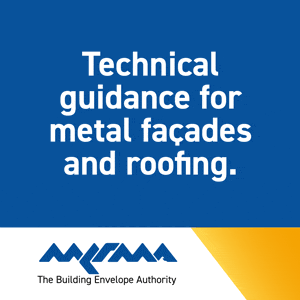Pump up performance
- Specify & Build
- Jun 15
- 3 min read
Choosing the right circulator pump for heating and air conditioning applications doesn’t just improve system performance – it can cut energy costs, reduce noise and make installation and maintenance far easier, says Adam Ferneyhough, Country Director UK for DAB Pumps.

In light commercial environments, where expectations on comfort, energy efficiency and operational performance are always high, the choice of circulator pump can have a major impact. Whether it’s for an office, a retail unit or a hospitality setting, the right pump helps heating and cooling systems to work quietly, efficiently and with minimum disruption, while also helping clients meet energy targets and control running costs. Specifiers face increasing pressure to design systems that deliver on both performance and sustainability. Choosing the right circulator pump is a small detail that can make a very big difference.
Noise is a serious consideration in commercial settings. Customers, tenants and staff all expect comfortable, quiet spaces and a poorly selected pump can quickly undermine that experience. Noise generated by vibration, excessive speed or incorrect sizing is not just irritating, it can affect building usability, particularly in healthcare and hospitality sectors where ambient noise levels matter. Traditional fixed-speed pumps, especially if oversized or poorly mounted, can introduce unwanted hums or mechanical sounds into the building.
Specifying low-noise designs is a smart choice. The Evoplus Lite from DAB Pumps, for example, is an electronic circulator pump with electronically controlled wet rotor motors that keeps sound levels exceptionally low, with a sound pressure rating of just 33dB(A). For comparison, that’s quieter than a typical office conversation, making it suitable for areas where background noise must be kept to a minimum.
Energy efficiency is another key concern. Fixed-speed pumps, still common in older systems, operate at full power regardless of demand, wasting significant energy. Pumps using variable speed technology adjust automatically to match system load, avoiding this energy waste. The ability to fine-tune output to meet real-time demand not only delivers smoother, more reliable performance but also significantly cuts energy consumption – a growing concern in a sector under pressure to hit ambitious carbon reduction targets. The Evoplus Lite offers six adjustable performance levels and includes a summer mode, which circulates water briefly every 25 hours even when not in active use, preventing limescale buildup without unnecessary energy use.

Installation on busy commercial sites presents another challenge. Tight spaces, awkward access and pressure to minimise downtime mean that products designed for straightforward installation can make a major difference. Simple plug-and-play connections and single button set up help reduce labour costs and keep projects on track. Features such as compact footprints and rotatable motor heads that allow the pump to be positioned at different angles are especially valuable where space is tight.
Maintenance is another critical consideration for commercial and retail environments, where any system downtime can have reputational and operational consequences. Older pump designs often require full disassembly to access the motor or clear blockages, causing delays and potential disruption to pipework integrity. By contrast, the Evoplus Lite offers direct motor shaft access for venting and servicing, while its design keeps electronics separate from the motor. This reduces the risk of failures caused by condensation or overheating. For busy specifiers, these practical features help create buildings that are easier and cheaper to run, delivering the kind of reliability that facilities managers and tenants increasingly expect.
Selecting circulator pumps that combine quiet operation, adaptive efficiency, easy installation and simple maintenance is essential good practice. Attention to these details can make the difference between simply meeting requirements and exceeding them when creating environments that are efficient, comfortable and future-ready.
























































.png)
